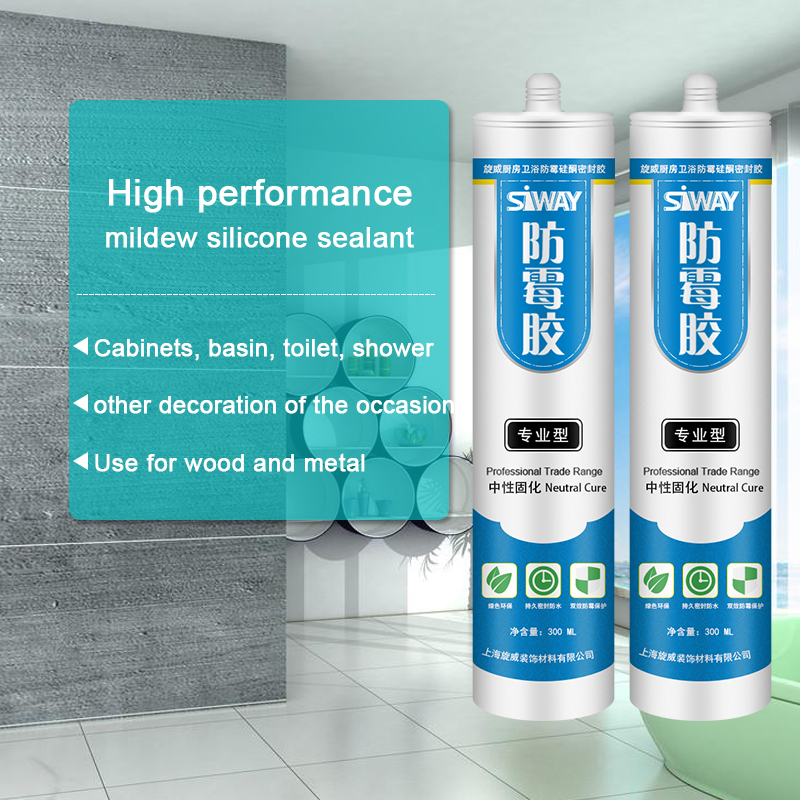Lowest Price for SV-8800 Silicone Sealant for Insulating Glass Export to Spain
Short Description:
Description SV-8800 is two components, high modulus; neutral curing silicone sealant specifically developed for assembly of high performance insulated glass units as secondary sealing material. Where to use It is a two-component silicone that offers variable work life with high bonding strength to maintain the integrity of insulating glass unit, suits both commercial and residential IGU. Key Features 1. High Modulus 2. UV resistance 3. Low vapor and gas transmission 4. Primerless adhesion...
We rely upon strategic thinking, constant modernisation in all segments, technological advances and of course upon our employees that directly participate in our success for Lowest Price for SV-8800 Silicone Sealant for Insulating Glass Export to Spain, Our professional technical team will be wholeheartedly at your service. We sincerely welcome you to visit our website and company and send us your inquiry.
Description
SV-8800 is two components, high modulus; neutral curing silicone sealant specifically developed for assembly of high performance insulated glass units as secondary sealing material.
Where to use
It is a two-component silicone that offers variable work life with high bonding strength to maintain the integrity of insulating glass unit, suits both commercial and residential IGU.
Key Features
1. High Modulus
2. UV resistance
3. Low vapor and gas transmission
4. Primerless adhesion to coated glass
5. 100% compatible to SV-8890
Technical data sheet
| Test standard | Test project | Unit | value |
| Before curing——25℃,50%R.H. | |||
| GB13477 | Specific gravity(After mixing) | 1.33 | |
| GB13477 | Operating time | min | 20-40 |
| GB13477 | surface drying time(25℃,50%R.H.) | min | 80-188 |
| corrosivity | No | ||
| 7 days after curing——25℃,50%R.H. | |||
| GB/T 531 | Durometer Hardness | Shore A | 40 |
| GB13477 | The tensile modulus at 12.5% elongation | Mpa | 0.18 |
| The ultimate tensile strength | Mpa | 0.92 | |
| GB13477 | Elongation limit (fracture) | % | 150 |
Certification
GB-24266-2009;
Color
Component A(Base) – White, Component B(Catalyst)- Black
Package
1. Component A(Base): (190L), Component B(Catalyst) (18.5L)
2. Component A(Base):24.5kg (18L), Component B(Catalyst): 1.9kg (1.8L)
Shelf life
12 months
Note
If you want the TDS or MSDS or other details, please contact with our sales person.
Polyguard Products, Barrier Products Division
The Polyguard Particle Barrier is an insect exclusion product and is easy to install. Used around the perimeter of the building, it can significantly reduce the quantity of termiticides needed to protect the structure.
Polyguard has registered our barrier products with the EPA, who
along with state agencies regulates pesticides. However, Polyguard’s barriers are classified by the EPA as “devices”, since they contain no toxic components.
Termites trying to get into a structure are unable to penetrate the
Polyguard Particle Barrier. Also important, in the case of the
Reticuletermes flavipes species, is that the insects are unable to get
out of a structure which they previously penetrated. In the majority
of infested structures, there is not sufficient moisture in the building
for Reticuletermes flavipes, so they have to come out to obtain
moisture.
TERM Sealant Barrier is a sealant barrier, applied with a caulking gun or smoothing tool, and used for both waterproofing and insect
exclusion . TERM Sealant Barrier is a component of the non-structural TERM Barrier System which, when properly constructed as part of the building envelope, acts as a barrier to almost all pests. Because almost all pests are excluded for the life of the structure, the need for pesticide treatment should be permanently and drastically reduced.
TERM Termite Bath Trap and TERM All Pest Bath Trap Barrier uses TERM Particle Barrier to permanently block termites. Add a stainless steel mesh barrier which is sealed to the concrete slab with TERM Flashing Barrier and with TERM Sealant Barrier. The All Pest Bath Trap Barrier blocks everything, including fire ants and rodents.
For more information, visit www.InsectExclusion.com




